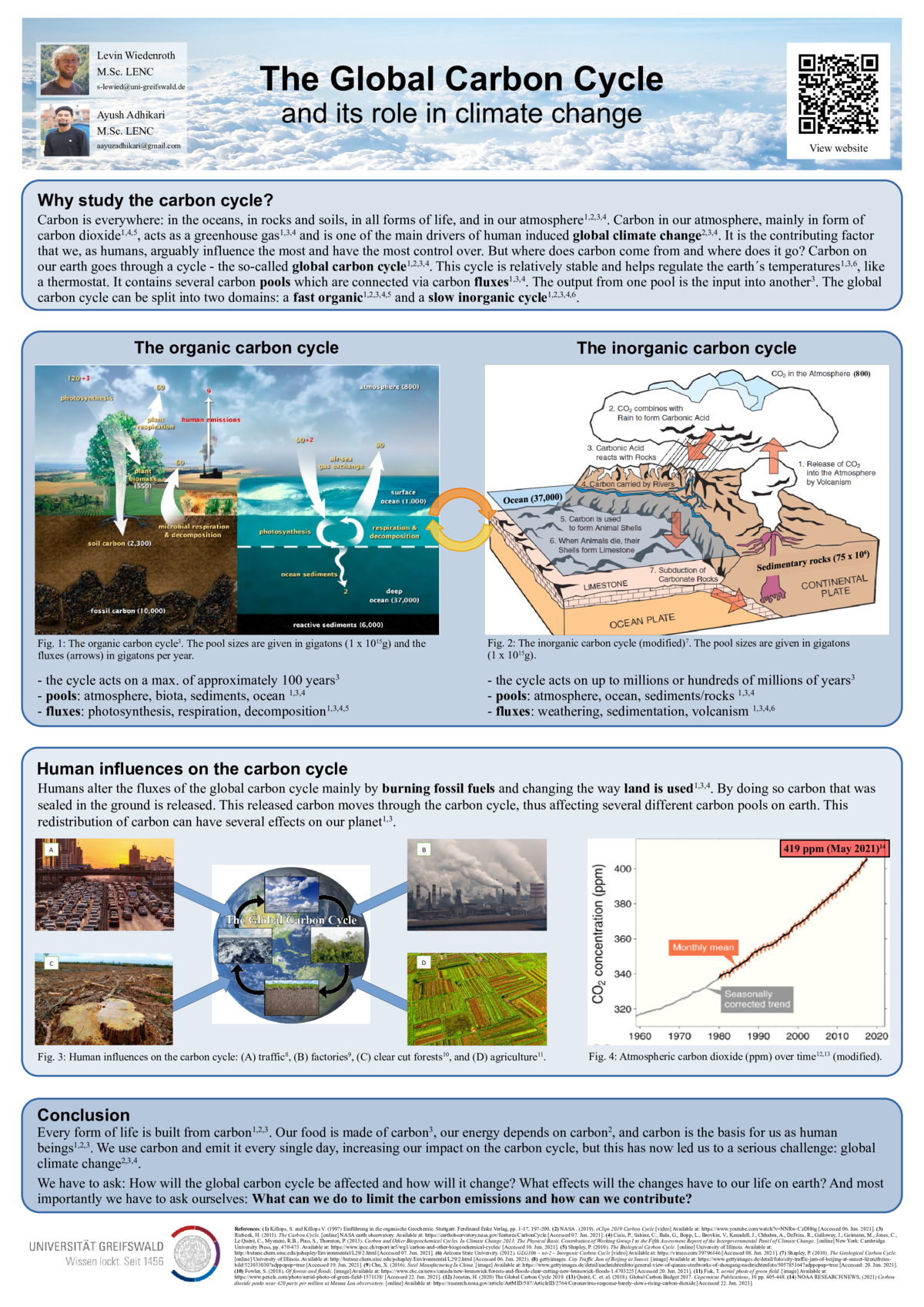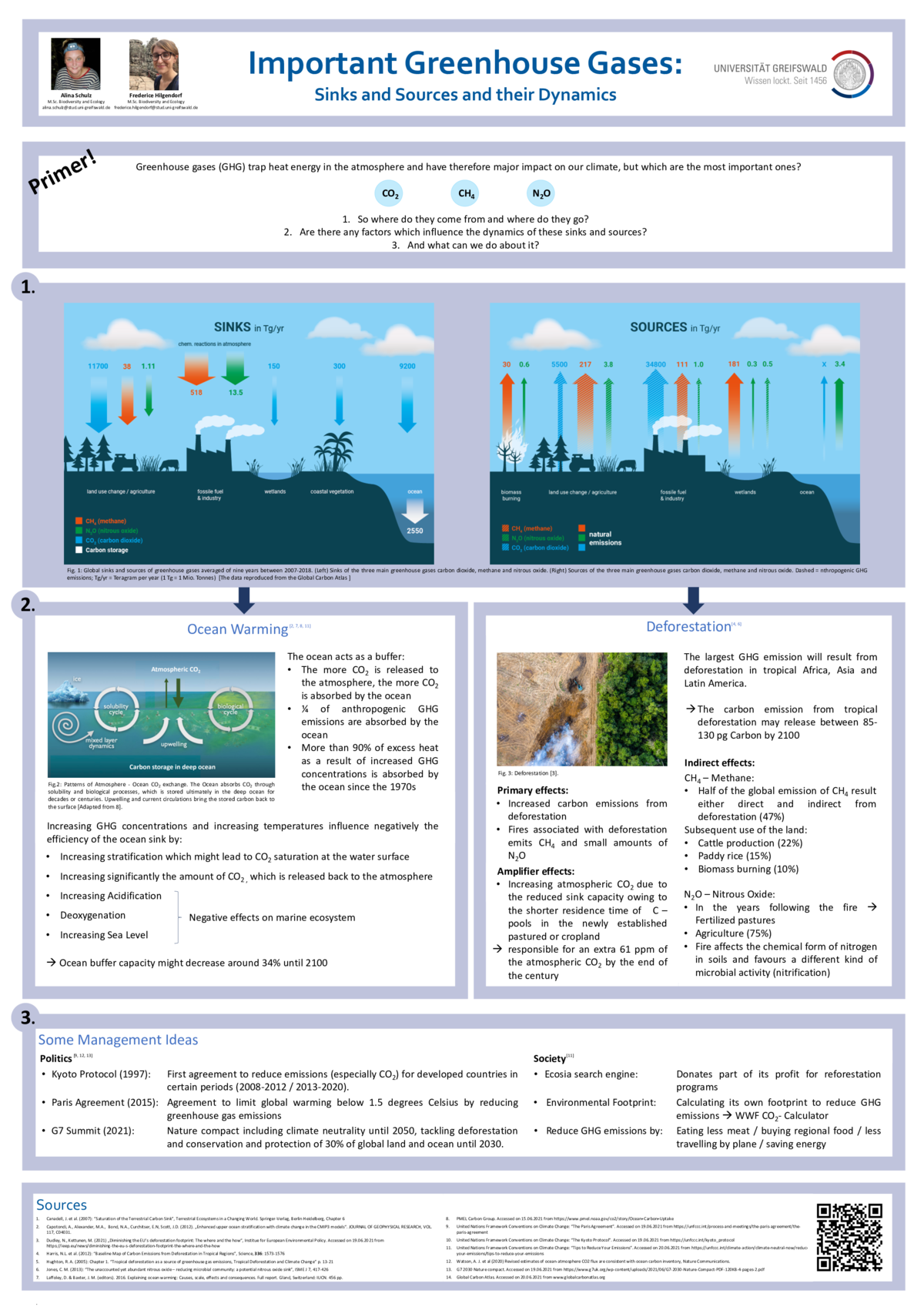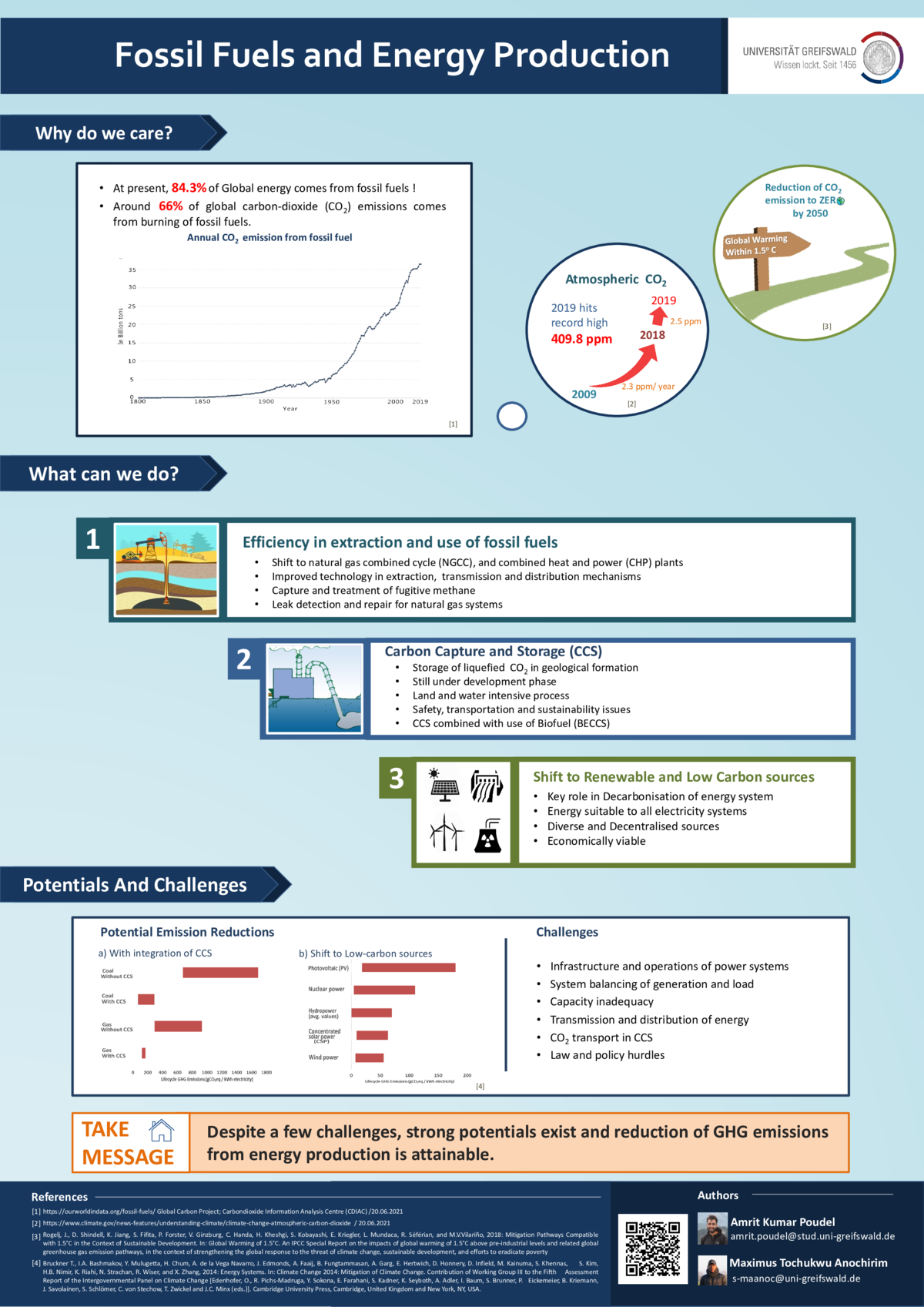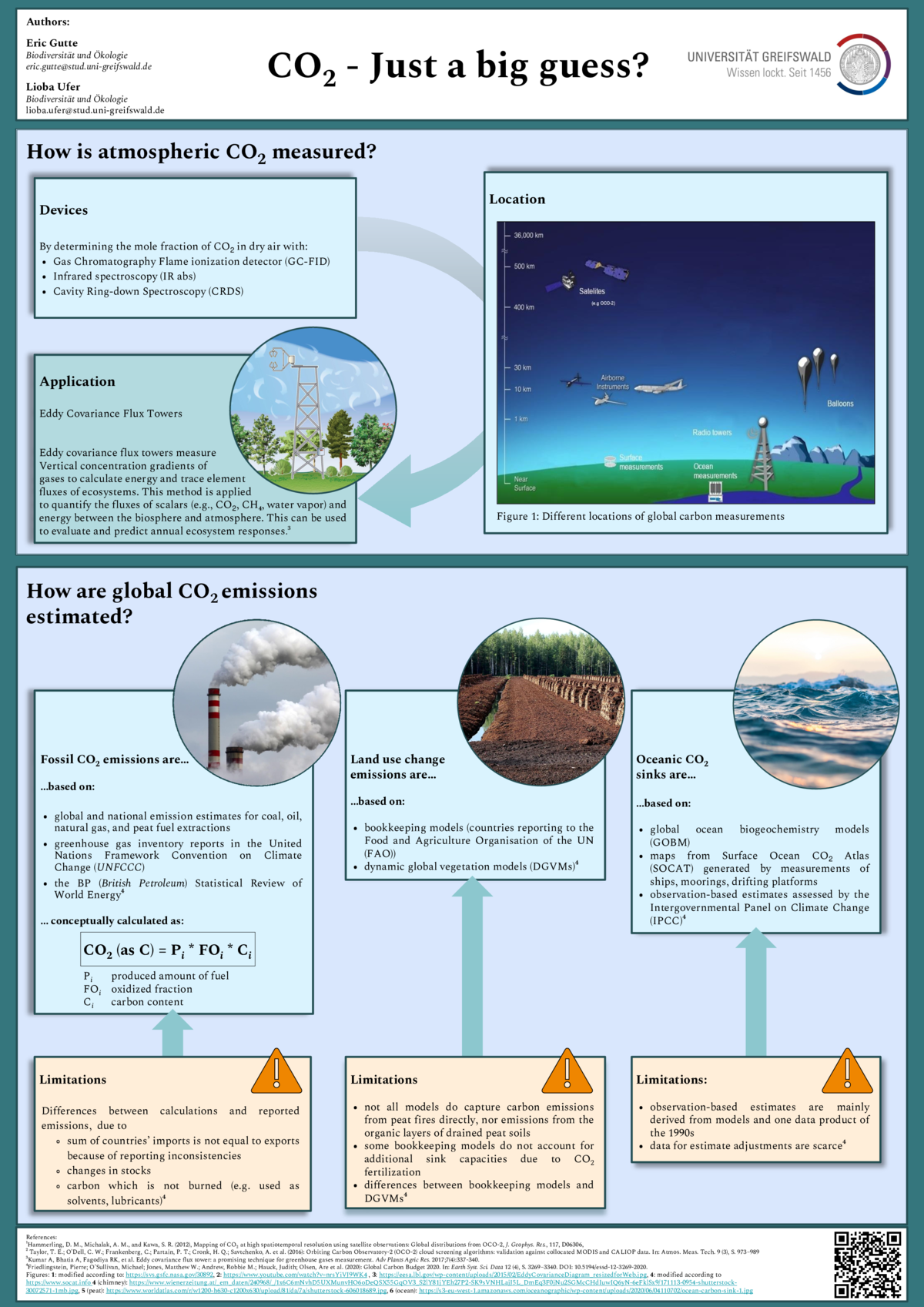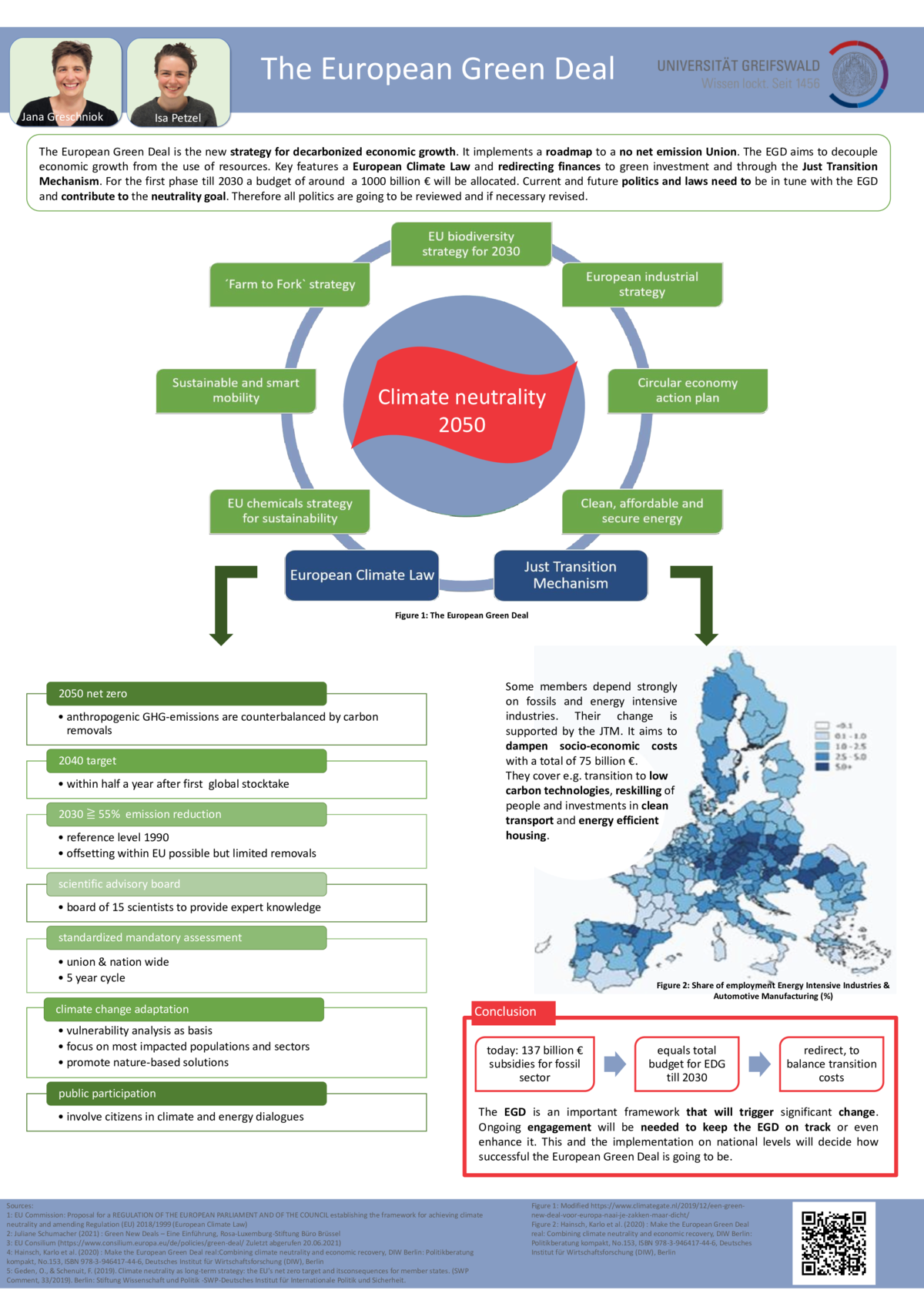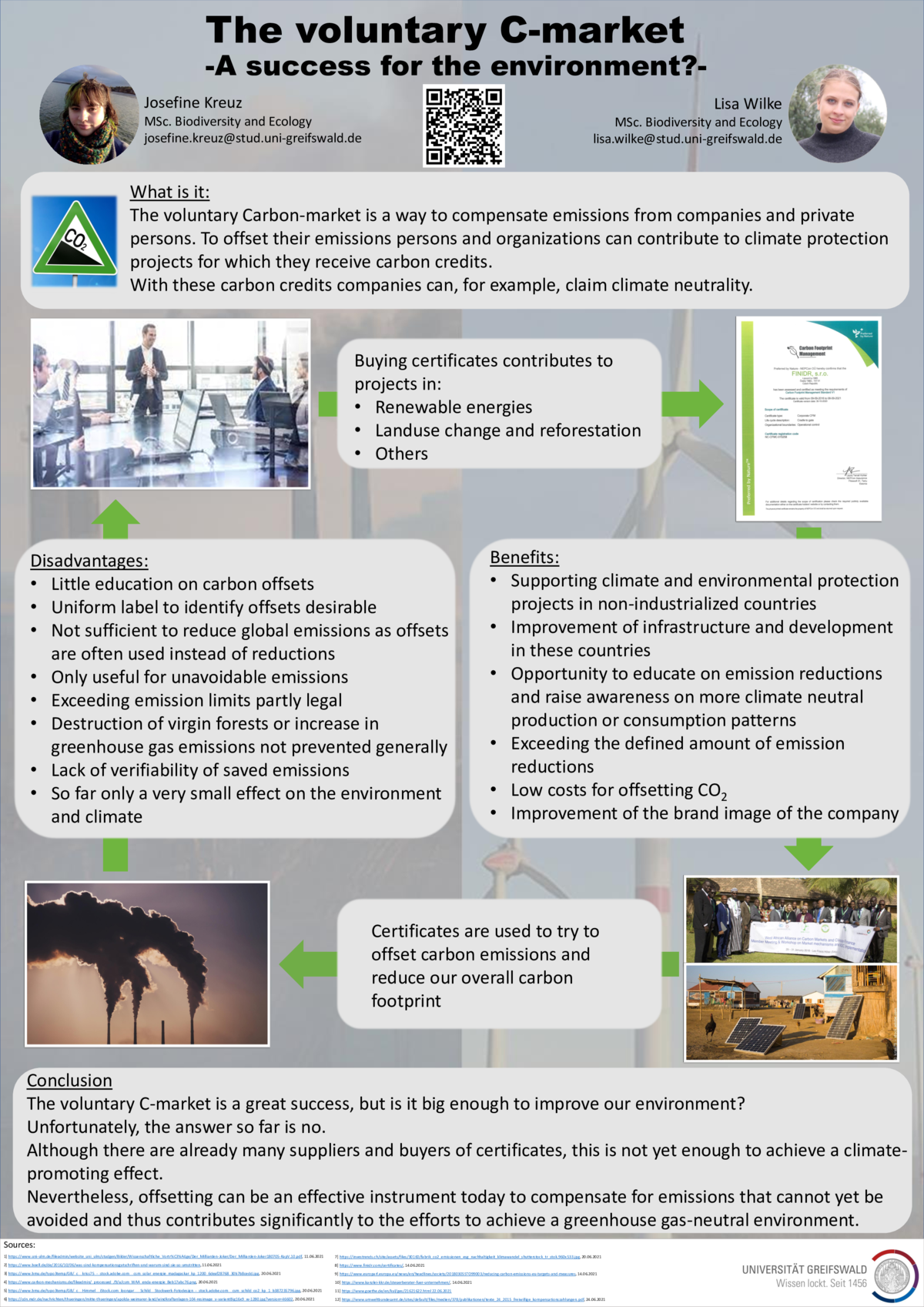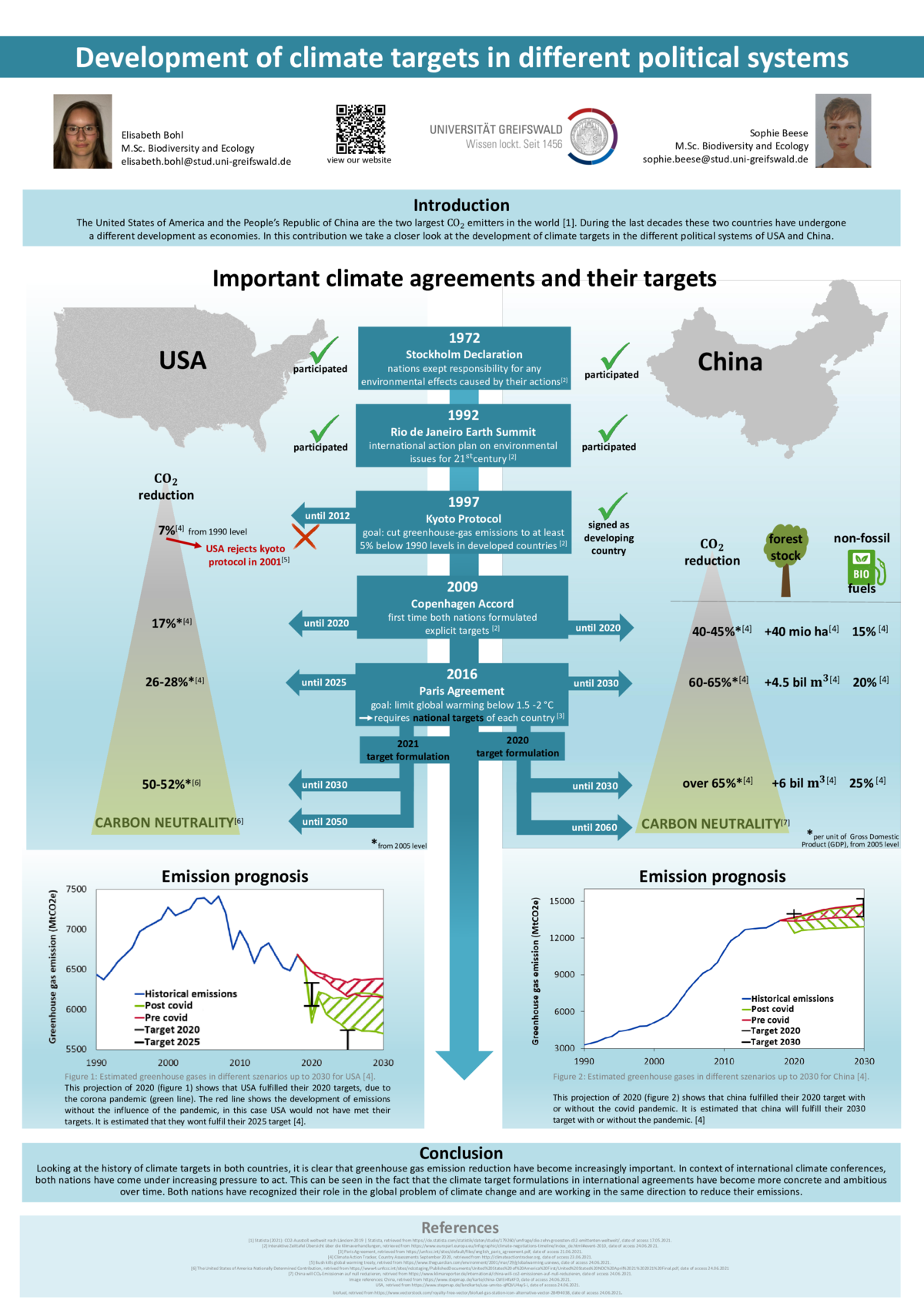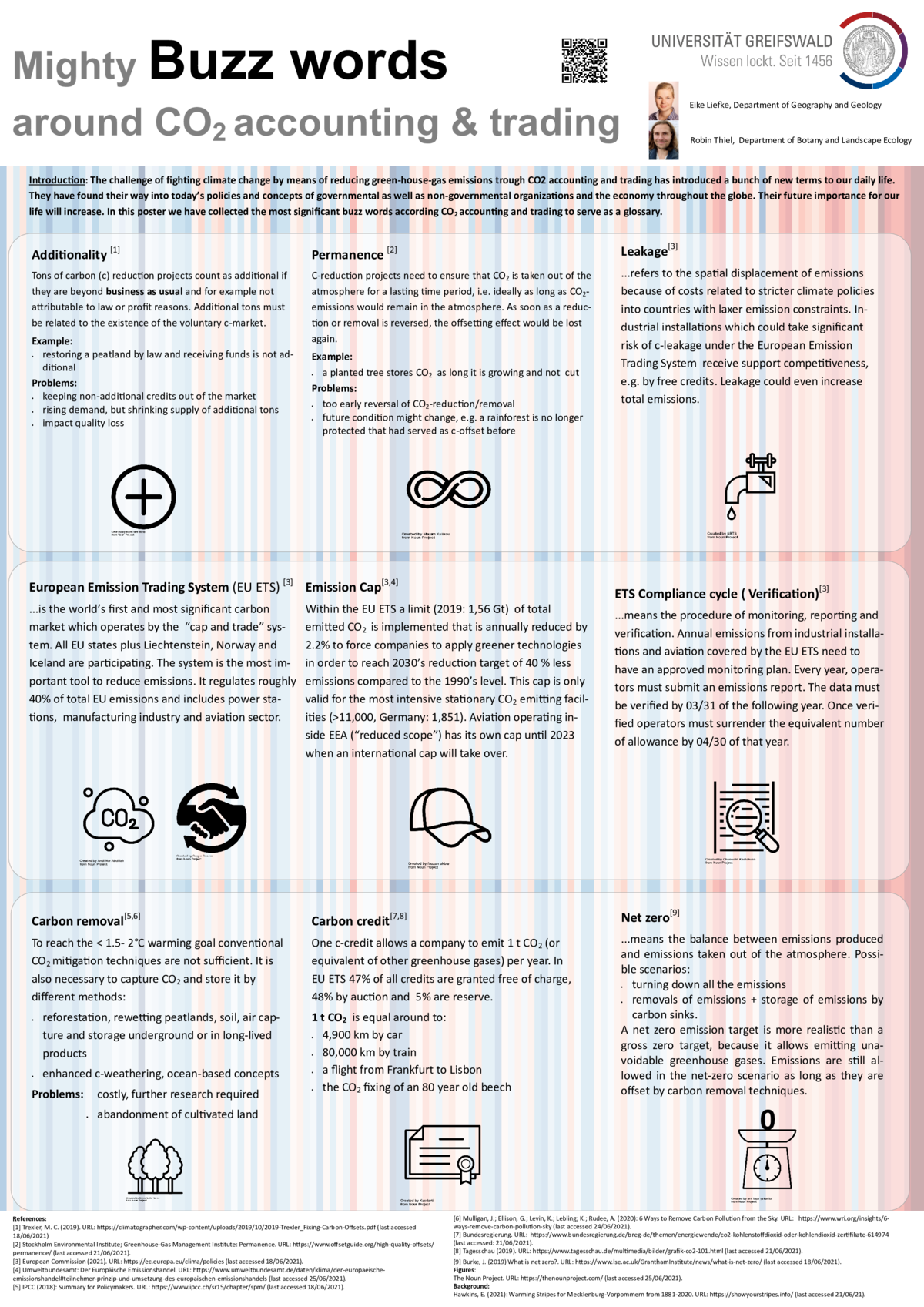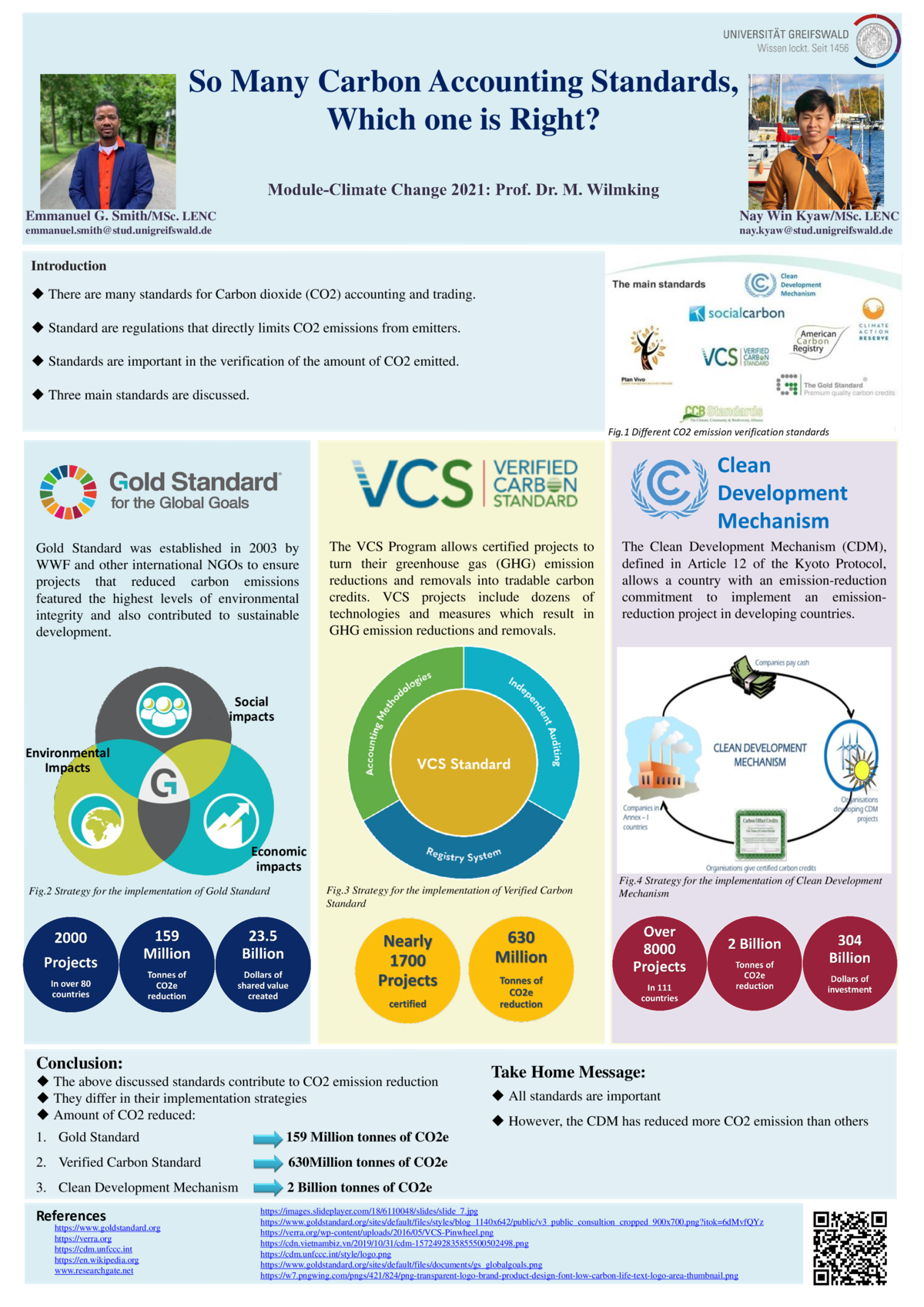
Below you can find all the contributions from students in the summer semester 2021 in the "Climate Change" module from Prof. Martin Wilmking, Ph.D.
For every topic you can find a short overview, the student's poster contribution and a 3 minutes video abstract.
Enjoy the virtual tour.
SESSION 1
CO₂ and other greenhouse gases – natural and anthropogenic dynamics
The global carbon cycle
Carbon is everywhere: in oceans, rocks and soils, all forms of life, and our atmosphere. Carbon in our atmosphere is mainly in the form of carbon dioxide, acts as a greenhouse gas, and is one of the main drivers of human induced global climate change. But where does the carbon come from and where does it go? This poster deals with these questions by giving a general overview on the global carbon cycle, which can be split into two sub-cycles: a fast organic and a slow inorganic one. The poster also looks at anthropogenic impacts on the carbon cycle.
Sinks and sources of greenhouse gases
What are greenhouse gases and where do they come from? We will show the main sinks and sources of greenhouse gases, as well as the important mechanisms that influence them. Is there still the possibility to asisst the sinks and sources under climate change or have we lost the game? We have multiple options to support our planet, not only the politics can do something but also every single one of us.
Fossil fuels and energy production
Every step of our life is driven by energy and majority of energy we use is generated from fossil fuel. As fossil fuel is a major contributor to anthropogenic Greenhouse Gas emission, it threatens natural systems and human existence. On other hand, the demand of energy is on hike with increasing population and changing lifestyle. To meet this increasing demand in an environment-friendly way, we need a shift in energy production mechanisms. In this poster, we discuss about present scenario of energy production, possible options for cleaner energy production, its opportunities and challenges.
Land use change in the past
Human induced land use changes influence the earths CO2 regime on a regional and global scale. To understand the background of these processes, we are looking at land use changes in the past. Our focus are global and regional events and their feedback mechanisms. These range from 8000 years BP to 1850 AD. Highlighting that the Anthropocene probably started before the industrial revolution.
Changing land - Changing climate: The potential of CO₂-extraction through future land use changes
Land on earth is scarce and most of it is already used by humans for agriculture, forestry or livestock. Current land use is responsible for one third of global greenhouse gas emissions and the more land is used, the more CO₂ emissions are released. But - could this relationship be reversed through land use changes in the future? What are the potentials of land use changes to mitigate Climate Change? We investigated different options how land can be turned into CO₂ sinks: afforestation, peatland restoration and greening of urban areas are just some options with high potentials.
Atmospheric carbon - measurements and estimates of global carbon emissions and their limitations
How do we actually know how much CO₂ is emitted into the atmosphere? Here we want to present the most important ways of firstly calculating atmospheric carbon concentrations and secondly how to calculated them conceptionally. Therefore, we focus on measurement techniques around the globe and the calculation of carbon flows originating from fossil energy sources, land use and oceanic uptake. Furthermore, limitations of each approach are illustrated to show the difficulties of analysing global CO₂ concentrations in the atmosphere.
SESSION 2
Towards a climate neutral society - CO₂ accounting and trading
The European Green Deal
For Europe to become climate-neutral in 2050 the economy must be decarbonized. This requires huge transformations.The basic framework is set by the European Green Deal from 2019. It determines intermediate GHG-reduction goals and names requirements for all sectors. The adjunct European Climate law is going to enter into force in 2021. This law complements the legal framework for the next 30 years. Now it is up to the members to translate the Green Deal into national policies. Only then it will turn out whether it is about creating loopholes or starting real change.
The EU Emissions Trading System (ETS)
Financial Instruments like carbon markets are interesting tools to control carbon emissions. By putting a price on carbon, carbon markets reshape incentives and investments faced by firms and helps reduce overall emissions. But How effective are carbon markets?
In this quest, we explore the first international carbon markets of the world; The EU Emissions Trading System (ETS). We take a brief look at its key mechanism, core challenges, noteworthy contributions, and the way it is helping EU to achieve climate neutrality by 2050.
The environmental footprint of cement: current situation and future possibilities
In this poster, we take a look at something that surrounds us almost everywhere we go, but no one hardly spares a thought for: cement. We provide definitions, explore the production process and discuss it's problematic consequences for the environment. Finally we shed light on the possible options for a more sustainable production and use of cement.
The voluntary carbon market
The voluntary Carbon-market is a way to compensate emissions from companies in industrialized countries by buying certified emission reductions from projects in developing countries.
Using these certificated brings different benefits to the companies and the developmental countries and supports projects that are advantageous for the environment. But this does not necessarily mean that it is a success for the environment.
Development of climate targets in different political systems
The United States of America and China are the two largest CO₂ emitters in the world. During the last decades these two countries have undergone a very different development as economies. In this contribution we take a closer look at the development of climate targets in the different political systems of USA and China. We have found that the two nations have started to take action on climate policy at different points in time. In connection with climate agreements such as the Paris treaty they were required to formulate their national targets. Both nations achieved their climate targets for 2020.
Mighty buzzwords around C0₂-accounting and trading
The challenge of fighting climate change by means of reducing green-house-gas emissions through CO₂ accounting and trading has introduced a bunch of new terms to our daily lifes. They have found their way into today’s policies and concepts of all kind organizations and world's economy . CO₂ trading, pricing and related terms, like for example permance, addionality and verification, will play an increasingly important role in our everyday life. In this poster we collected the most significant buzzwords with a lot of meaning around CO₂ accounting and trading to serve as a glossary.
So many carbon accounting standards, what is right?
There are many standards for Carbon dioxide (CO₂) accounting and trading. Standard refers to regulation that directly limits CO₂ emissions from emitters. Standards are important to verify and reduce the amount of CO₂ emitted. In order to reduce carbon dioxide emissions, many standards have been developed. We examined three main standards to establish what is right. The three main standards discussed are: The Gold Standard, Verified Carbon Standard and the Clean Development Mechanism and their similarities/dissimilarities in CO₂ accounting.

